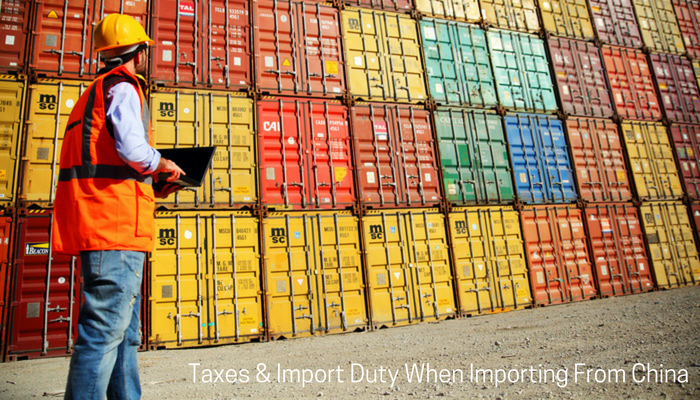You may think the language barrier or distance will cause you the most headaches when importing from China, but often just making sense of import taxes and duty becomes confusing too.
These are the costs that you can’t avoid when you want to bring goods into Australia. When you are new to the game it can take some time to work out what you owe.
In this guide, we’ll explain everything you need to know, step by step in plain English.

What You Need To Know: Quarantine, Customs Duties, Tariffs and Concessions
You have decided you can save money on producing your goods in China. You organise a manufacturer, sign off on the prototype and decide on the quantity. Now you know the cost of the shipment, you can begin to calculate the tax and import duty payable.
Step 1: Check if your goods will need to be quarantined
If you are importing anything that contains the following, you will be subject to quarantine:
-
a mineral
-
contains plant products
-
contains an animal
-
human products
The Department of Agriculture and Water Resources has an import conditions database called the Biosecurity Import Conditions System (BICON) with information on more than 20,000 mineral, plant, animal and human items.
BICON will advise whether you need to organise an import permit.
Step 2: Know the Rules for clearing customs and customs duties
Next, you need to know a little about the Australian customs requirements and the duties you may need to pay when the goods arrive on Australian shores. The Department of Home Affairs places imported items into categories for calculating costs.
Customs duties can be calculated using several methods, but the most common is based on the price of the goods known as ‘transaction value’. The value can be altered with commissions or royalties. The cost of freight and insurance isn’t included in the value. The cost of packing labour and packaging are included, but the cost of the container and pallets imported temporarily are not included.
If transaction value can’t be used the following method may be applied:
-
Identical goods value
-
Similar goods value
-
Deductive value
-
Computed value
-
Fallback value
You can check the Valuation of Imported Goods for more information on customs value. The average rate of duty is 5% of the good’s value but can be as high as 10%. It is vital that the correct value of goods is used as penalties may apply.
Step 3: Calculating the Tariffs and Taxes Payable
Importing from China will attract Australian taxes. There are some fees that everyone pays while some fees and import duties are only charged on particular types of goods imported into Australia.
A processing charge is payable on all consignments
A Goods and Services Tax of 10% is calculated on the import duty, value of goods, insurance and transport costs.
Goods are classified against a schedule for calculating the tariff payable.
Any goods containing alcohol, tobacco or fuel may be subjected to an excise.
Step 4: Concessions on Import Duty Australia
There are some exemptions and discounts on the import duties listed above. Australia entered into a Free Trade Agreement with China in 2015. The Agreement eliminates some barriers to international trade and investment. Check to see if your goods come under the Free Trade Agreement.
Concessions on tariffs are sometimes made allowing goods to enter into Australia for free or reduced rates. A deferred payment of the duty is also available. These benefits are often applied to imported goods that have no substitute produced in Australia. More information is available on the Tariff Concession System.
Thanks to the free trade agreement between Australia and China, the average duty rate for most of our products from China is now actually 0%.
Know your Sums When Importing to Australia
The number of different tariffs and duties makes calculating the costs difficult. It’s important that you do your numbers before placing your order for goods to be manufactured in China. You don’t want to find out when the goods arrive on the dock that the addition of taxes and charges make your goods far more expensive than you thought.
The Easiest Way to Forecast your Landed Price in Australia:
Based on years of experience with importing for our clients in many different industries, Vara Allied can provide all of our clients with an estimated landed price in $AUD which includes all duty, dumping duty, freight, transport and more. Quarantine is different - it is rare for a shipment to get a Quarantine hold so we don’t quote these costs as it varies depending on hold times and other costs.
If you have any queries about customs duties and import charges to Australia that aren't answered in this article, give us a call on (08) 6115 0118 or contact us.